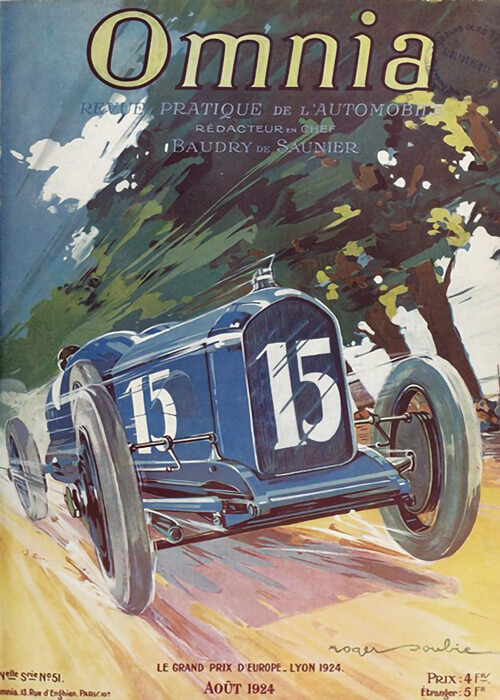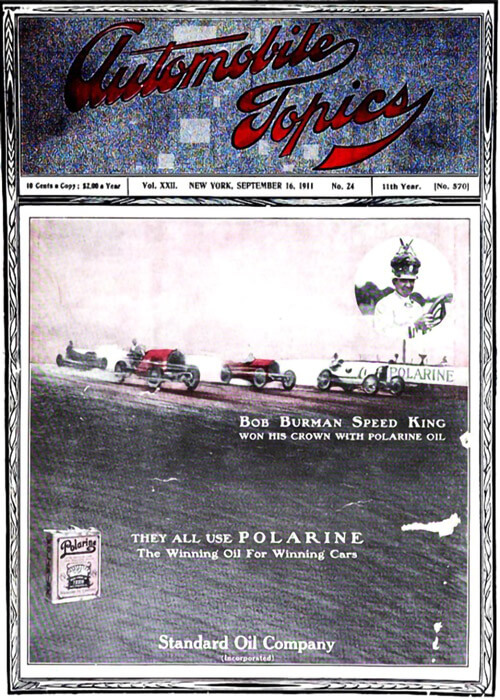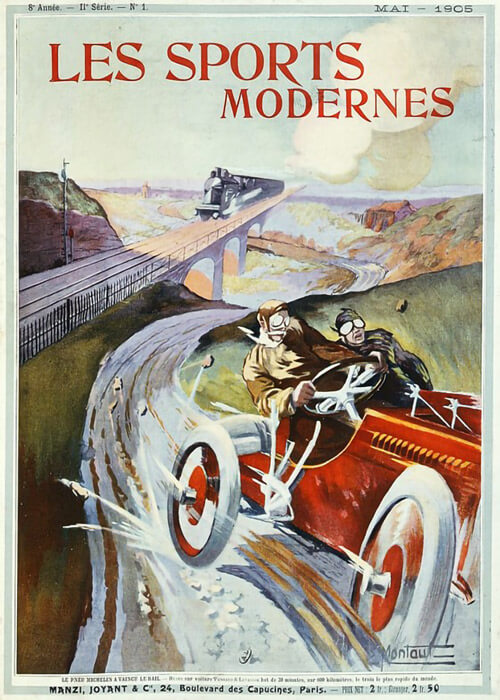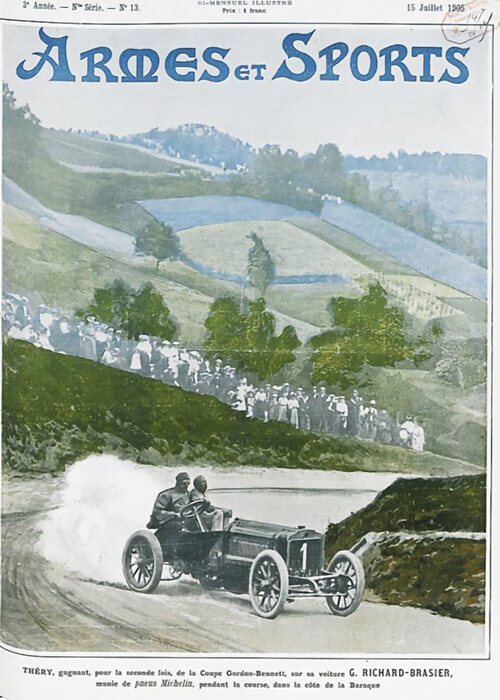The 1914 Indianapolis 500 – again ze French.
Despite a transatlantic journey and all the costs involved, the prize money at Indy was enough of a temptation for the Peugeot team to return. And with their superior technology and cars they stood a very good chance. But Peugeot was joined by Delage who also tried to claim a part of the massive amount of money available.
Among the American drivers who started the race was a famous name. The near national hero Barney Oldfield finally made his debut at Indianapolis. This kind of long distance racing was not what he had become famous for. His arch enemy Ralph DePalma had also qualified a car (Mercedes) but withdrew since the car was not behaving properly. The crowd was thus denied a battle between these two giants of the early American racing scene in an Indy 500.
When the race was over, the American cars were left in the dust. The highest placed car was a Stutz, driven by, of all people, Barney Oldfield.
The more advanced Peugeots however had not been as dominant as one year before. Victory went to the Delage of René Thomas and Delage also finished 3rd with Albert Guyot driving that car. The factory Peugeot’s could not do any better than fourth; last year Jules Goux was the first classified driver of the team. The honour of Peugeot was nonetheless saved in a very respectable manner.
The least fancied of the cars, the 3 liter car (less than half the capacity of the top contenders), driven by the Belgian driver Arthur Duray finished in second place!
It is very likely that this year, the record was set for the most economical run ever at Indy driven by a car if it came to the value of money of the amount of fuel consumed during the race.
1911 Winner Ray Harroun was engineer for the Maxwell team and Harroun had one of the cars fitted with a carbureter suited for the use of kerosine. A fuel that sold for $0.06 per gallon and the car finished the race in 9th place, having consumed some 30 gallons of kerosine. Total costs on fuel was less than $2.00.
But Harroun and the Maxwell team were even more innovative than that. During practice, Harroun and driver Terry Tetzlaff made experiments with a two-way radio communication system between cars and pits! But it was far too early for such an innovation in the actual race.
The French went home with the money and prepared for the classic event on their home ground: the Grand Prix de France. Road racing was still big in Europe, whereas in the USA the appeal of the primary American road races began to diminish slowly, yet that of Indianapolis was still increasing with the year.
Later this year, however, „the lights would go out in Europe“ for a long time and with it, motor racing. YKW
Indianapolis 500 - 1914
The Horseless Age
MoToR
- The Foreign Cars for Indianapolis - under construction
- 1914 International Sweepstakes - under construction
- Should American Makers Race? - under construction
- The Champions of Road Racing - under construction
Motor Age
The Motor World
The Motor Way
The Automobile
- Thirty Cars for the Fray - under construdtion
- Thomas, in Delage, Wins - under construdtion
- The Story of the Race, a Fierce Battle - under construdtion
- Pit Efficiency Won by Thomas - under construdtion
- Indianapolis and Brooklands Greatest Speedcourses - under construdtion
Automobile Topics
- Offer $86,000 to Speedway Winners - under construction
- All is Ready for Indianapolis Race - under construction
- Thomas Wins 500-Mile Race - under construction
- 300-inch Engines for 500-Mile Race - under construction
The Automobile Journal
- Forty-Four Entrants for Big Race - under construction
- Fourth International Sweepstakes - under construction
- Details of cars in Fourth 500-Mile Race - under construction
- Drivers in Indianapolis Contest - under construction
- Thomas in Delage takes 500-Mile Race - under construction
La Pratique Automobile
- Le Grand Prix d'Indianapolis - under construction
La Vie au Grand Air
- Thomas Gagne le Grand Prix d'Indianapolis sur Delage - u.c.
La Vie automobile
- Victoire francaise à Indianapolis - under construction
Les Sports Modernes
Le Sport Universel illustré
- Le Grand Prix d'Indianapolis - under construction





